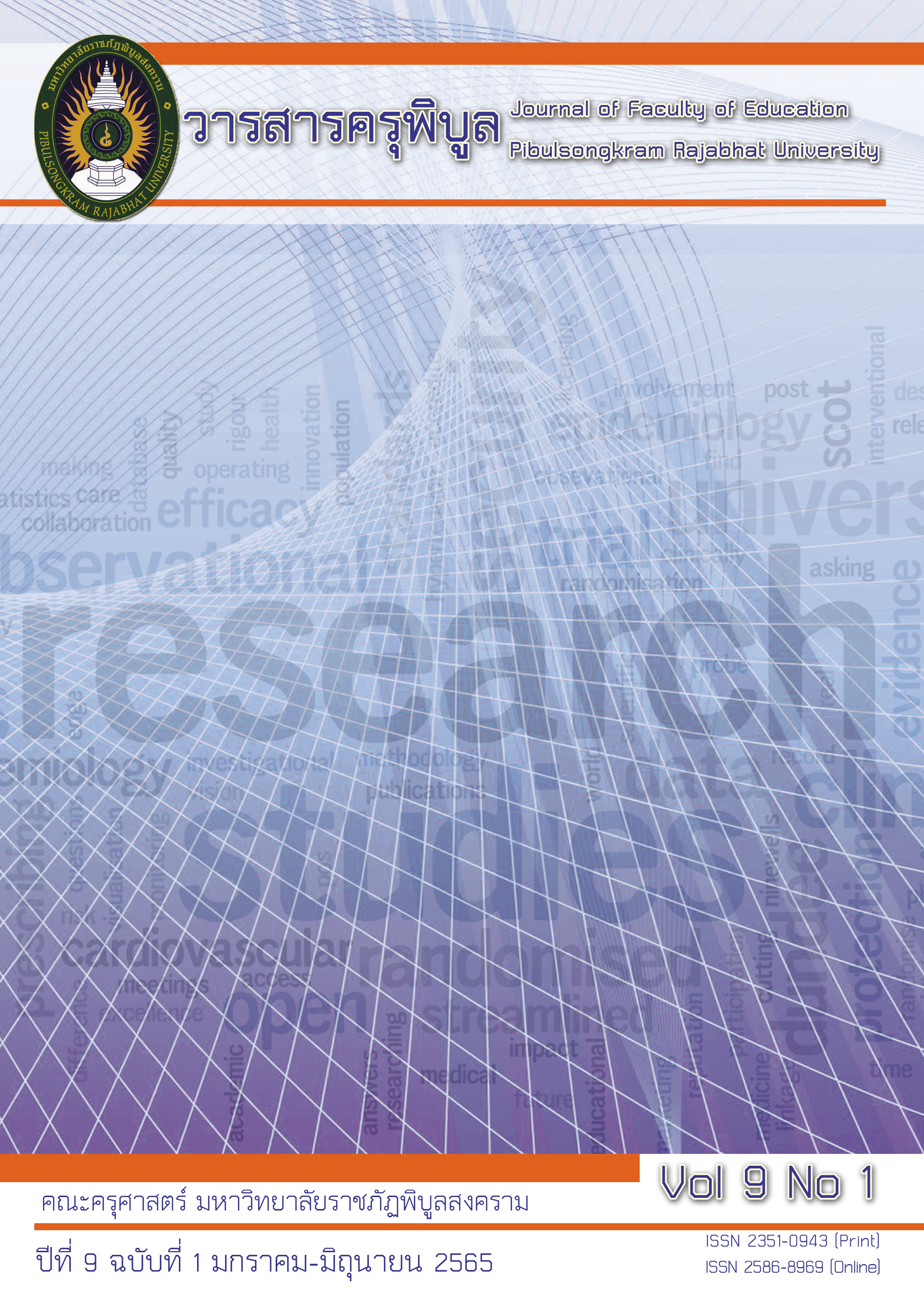DEVELOPMENT OF A Collaborative Problem-Solving Competency Test For Lower Secondary School Students
THE DEVELOPMENT OF A Collaborative Problem-Solving Competency Test For Lower Secondary School Students
Keywords:
collaborative problem-solving competency, The development of a collaborative problem-solving competency test for lower secondary school studentsAbstract
The objectives of this research are 1) To create a collaborative problem-solving competency test for lower secondary school students. 2) To examine the quality of the Collaborative Problem-Solving Competency form. The sample group was lower secondary school students of the academic year 2019 who studied in schools under the Secondary Educational Service Area Office, Region 42 (Nakhon Sawan and Uthai Thani), with a total of 740 students from 10 schools. The research tool was a general situational measure that students encountered in daily life with three choice options, which consisted of 3 situations. Each answer is given a different score, which is divided into 3 levels: High (3), Medium (2), and Low (1). The data analysis was performed using a measure of conformity index (IOC), correlation coefficient (Pearson), using SPSS, and second-order confirmation of composition analysis. By using LISREL program.
The results of the research were as follows: 1) The results of creating a Collaborative Problem-Solving Competency Test for lower secondary school students has 24 questions in total, divided into 3 situations, with the first situation: labeling 12 supervisors. The second situation: Group five reports and the third situation: Making 7 Krathongs.
2) The results of the quality of the Collaborative Problem-Solving Competency for, there was a content validity (IOC) result with a consistency index of between 0.80 and 1.00. The reliability of the Cronbach's alpha coefficient was used for Cronbach's alpha coefficient for the accuracy of the whole paper 0.803. After analyzing the valid elements, all indicators were statistically significant at the .01 level of 12, covering 3 sub-performance elements. Analyzed the consistency of the indicator model used in the development of a collaborative problem-solving competency test for lower secondary school students and found that they were consistent with empirical data ( = 24.95, df = 17, p-value = 0.095, RMSEA = 0.025). The weight values of the three indicators were positive, ranging in size from 0.884 to 0.990. The elements of developing and Keeping the common understanding had the highest element weight value. Followed by the component of the selection of appropriate action for solving problems and the building and order elements of the group, which had the element weights of 0.990, 0.987 and 0.884, respectively, and there were 98%, 97%, and 78% of the variance together with the collaborative problem-solving competency test for lower secondary school students, respectively.
References
บุญธรรม กิจปรีดาบริสุทธิ์. เทคนิคการสร้างเครื่องมือรวบรวมข้อมูลสำหรับการวิจัย. พิมพ์ครั้งที่ 7. กรุงเทพฯ : ศรีอนันต์การพิมพ์, 2553.
ล้วน สายยศ และอังคณา สายยศ. (2543). เทคนิคการวัดผลการเรียนรู้. (พิมพ์ครั้งที่ 2). กรุงเทพฯ : สุรีวิริยาสาส์น.
สถาบันส่งเสริมการสอนวิทยาศาสตร์และเทคโนโลยี. (2554). ผลการประเมิน PISA 2015 ด้านการแก้ปัญหาแบบร่วมมือ (Collaborative Problem Solving: CPS). สืบค้น 10 มีนาคม 2562, จาก www.ipst.ac.th
สาลินี จงใจสุรธรรม. (2546). การพัฒนาแบบทดสอบวัดวัดความสามารถทางคณิตศาสตร์ของนักเรียนชั้นมัธยมศึกษาปีที่ 3. วิทยานิพนธ์ กศ.ม., มหาวิทยาลัยทักษิณ, สงขลา.
สำนักงานคณะกรรมการการศึกษาแห่งชาติ. (2540). แผนพัฒนาการศึกษาแห่งชาติฉบับที่ 8(พ.ศ.2540-2544). กรุงเทพฯ : สำนักนายกรัฐมนตรี.
เอกรินทร์ อัชชะกุลวิสุทธิ์.(2557). การประเมินด้านการแก้ปัญหาแบบร่วมมือของ PISA 2015, นิตยสารสสวท. ปีที่ 43 ฉบับที่ 191 พฤศจิกายน- ธันวาคม 2557, หน้า 37-41.
Hesse, K., Kriston, L., Mehl, S., Wittorf, A., Wiedemann, W., Wolwer, W., et al. (2015). The vicious cycle of family atmosphere, interpersonal self-concepts, and paranoia in schizophrenia-a longitudinal study. Schizophr. Bull. doi: 10.1093/schbul/sbv055
Householder, D.L. and Hailey, C.E. (2012). Incorporating engineering designchallenges Into STEM courses.Retrieved November 23, 2017, from http://digitalcommons.usu.edu/ncete_publication/166
OECD. (2013). PISA 2015 draft collaborative problem solving framework, Paris: OECD.
O’Neil, A., Berk, M., Itsiopoulos, C.,et al. (2013). A randomised, controlled trial of a dietary intervention for adults with major depression (the “SMILES” trial): study protocol. BMC Psychiatry,13, 114.https://doi.org/10.1186/1471-244X-13-114
Downloads
Published
Issue
Section
License
Copyright (c) 2022 คณะครุศาสตร์ มหาวิทยาลัยราชภัฏพิบูลสงคราม

This work is licensed under a Creative Commons Attribution-NonCommercial-NoDerivatives 4.0 International License.
ลิขสิทธิ์เป็นของคณะครุศาสตร์ มหาวิทยาลัยราชภัฏพิบูลสงคราม


